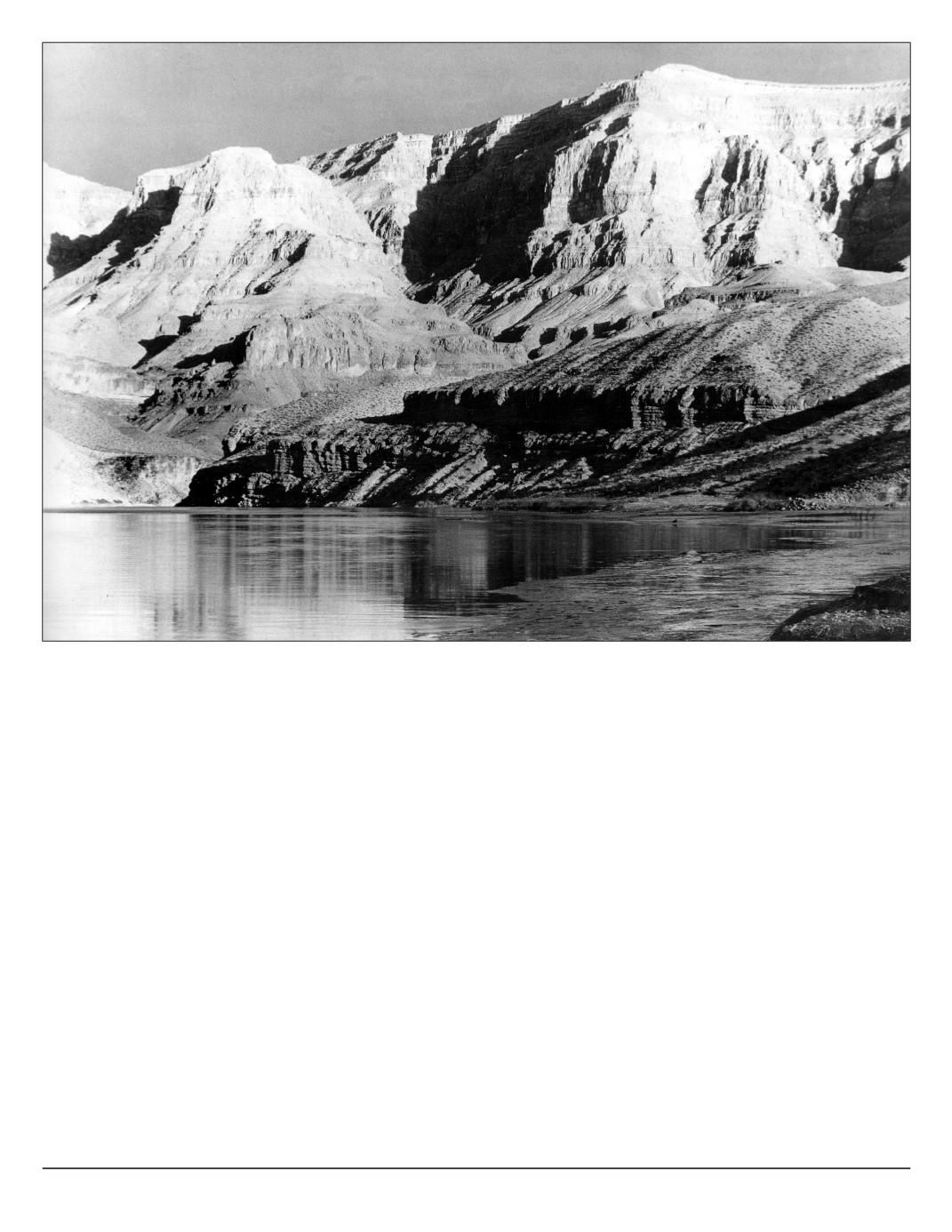

Time Lines 27
In this photo provided by the U.S. Bureau of Reclamation, an unfrequented segment of the Grand Canyon
is seen in the late evening from the waters of Boulder Lake, Ariz., Dec. 2, 1935. (AP Photo/U.S. Bureau of
Reclamation)
rison unsuccessfully reintroduced his
bill in 1883 and 1886; after his elec-
tion to the presidency, he established
the Grand Canyon Forest Reserve in
1893.
Theodore Roosevelt created the
Grand Canyon Game Preserve by
proclamation on 28 November 1906
and the Grand Canyon National
Monument in 1908.
Further Senate bills to establish
the site as a national park were intro-
duced and defeated in 1910 and 1911,
before the Grand Canyon National
Park Act was finally signed by Presi-
dent Woodrow Wilson in 1919. The
National Park Service, established in
1916, assumed administration of the
park.
The creation of the park was an
early success of the conservation
movement. Its national park status
may have helped thwart proposals
to dam the Colorado River within its
boundaries. (Later, the Glen Canyon
Dam would be built upriver.) In 1975,
the former Marble Canyon National
Monument, which followed the Colo-
rado River northeast from the Grand
Canyon to Lee’s Ferry, was made part
of Grand Canyon National Park. In
1979, UNESCO declared the park a
World Heritage Site. The 1987 the
National Parks Overflights Act found
that “Noise associated with aircraft
overflights at the Grand Canyon Na-
tional Park is causing a significant
adverse effect on the natural quiet
and experience of the park and cur-
rent aircraft operations at the Grand
Canyon National Park have raised
serious concerns regarding public
safety, including concerns regarding
the safety of park users.”
In 2010, Grand Canyon National
Park was honored with its own coin
under the America the Beautiful
Quarters program.
Grand Canyon National Park pre-
serves an iconic geologic landscape
and resources ranging from 1,840 to
270 million years old, including di-
verse paleontological resources; un-
consolidated surface deposits; a com-
plex tectonic and erosion history; and
Pliocene to Holocene volcanic depos-
its.
The Colorado River established its
course through the canyon about six
million years ago, and likely evolved
from pre-existing drainages to its
current course. Geologic processes,
including erosion of tributaries and
slopes, and active tectonics continue
to shape the canyon today. The geo-
logic record in Grand Canyon is an
important scientific chronicle and is
largely responsible for its inspira-
tional scenery.


















